Wetlands are almost everywhere in Pennsylvania -- more than 400,000 acres, in fact. They are found near streams and rivers, along valleys, and even on top of mountains.
DCNR lands contain thousands of acres of these types of habitats, which are among the most biodiverse places in the state.
A large variety of life from microbes to otters can be part of a wetland ecosystem.
The high level of nutrients and large amount of life they hold is ideal for the development of the base of the food web.
Many species of fish, amphibians, shellfish, insects, birds, and mammals rely on wetlands for food, water, and shelter -- especially during migration and breeding.
Wetlands are important in urban and suburban areas too. They slow stormwater flow, capture runoff, and absorb excess nutrients.
When the water and ground freeze, these places once teeming with life tend to slow down to a crawling pace. But if you know what to look for, you can tell there is still much going on in wetlands during winter.
Here’s a peak at what happens in some wetlands in state parks and forests when the weather turns cold:
Spruce Flats Bog -- Forbes State Forest
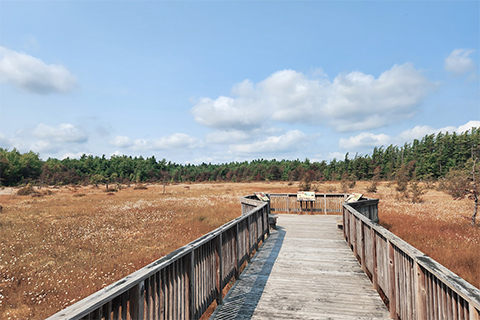
More than 2,700 feet above sea level in the Laurel Highlands in southwest Pennsylvania sits the rare, high-elevation Spruce Flats Bog. The plants and animals that live here are getting ready for a long winter’s nap.
Bogs receive all or most of their water from rain and snow rather than from groundwater or streams. That means bogs usually occur in lowlands, not on mountaintops!
Because of a depression in the bedrock, water collects here at a high elevation. Fortunately, for this bog, the Laurel Highlands receives large amounts of precipitation in the winter, helping to refill and replenish it.
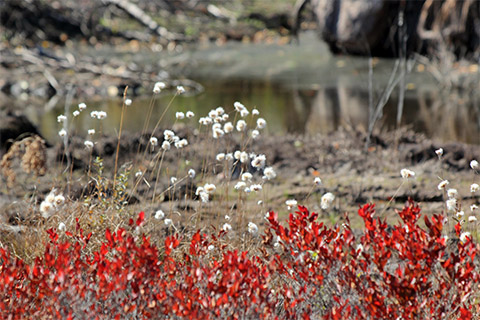
Cotton grass also gets a helping hand from winter. The tops of these grasses have cotton-like tufts surrounding their seeds, which they hold on to into fall.
Wet conditions may cause these seeds to fall and stick to the ground. However, colder, more icy conditions prevent this and can help the seeds travel much farther on the wind.
During the warmer months, you can spot carnivorous plants like sundew and pitcher plants here. These plants go dormant in the winter until the temperatures and light levels increase in the spring.
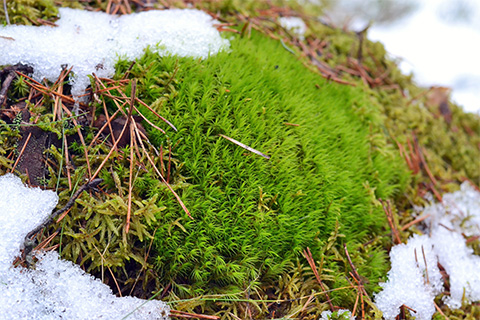
Visitors to the bog will see that sphagnum moss stays green and colorful throughout the winter. There are eight species of sphagnum moss that call Spruce Flats home, and these have evolved the ability to withstand freezing temperatures.
Forest Pools -- Kings Gap Environmental Education Center
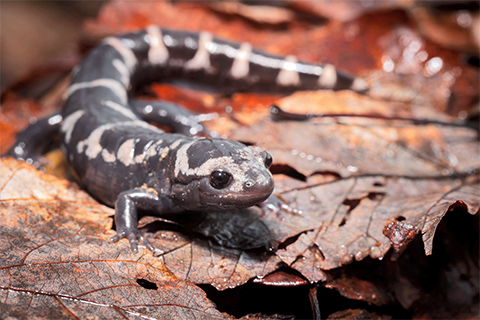
Vernal pools are a unique type of wetland habitat. They are typically small, shallow, and seasonal -- meaning they dry up in the warmer months.
The vernal pools at the Forest Pools Preserve at the base of South Mountain in Cumberland County are filled in winter and spring by snow and rain; and dry up in the warmer months, supporting several species that require these temporary wetlands.
These pools are particularly important for the marbled salamanders, which are fall breeders. Because of this late hatching, these larvae are likely to be the only salamander larvae that would be found under the ice in a vernal pool.
Marbled salamander larvae are carnivorous and feed on macroinvertebrates under the ice. As they grow, they can feed on larger prey, so by spring they are developed enough to eat what is available.
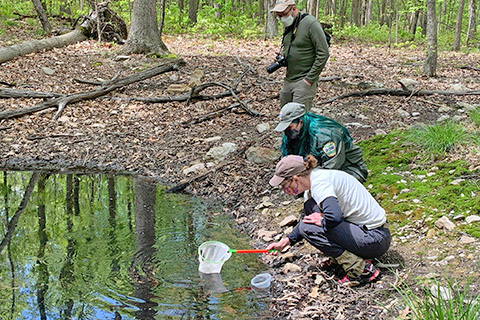
DCNR has worked with The Nature Conservancy since 2007 to identify vernal pools at this location for protection and restoration, and to carry out conservation strategies to benefit the health of the surrounding forest.
Algerine Swamp -- Tiadaghton State Forest
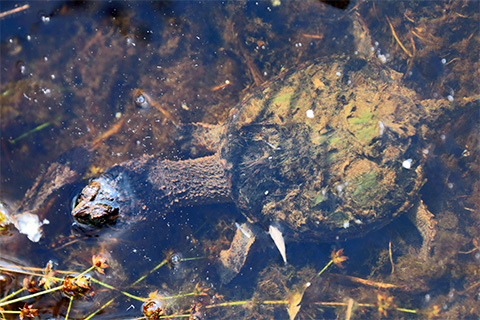
Algerine Swamp -- a bog in Tiadaghton State Forest in the Pennsylvania Wilds -- also is showing signs that winter is coming. Protected within the 84-acre Algerine Swamp Natural Area, it is prime habitat for black spruce, balsam fir, and other northern plant species.
Sedges are grass-like plants that dominate wetlands like the Algerine Swamp, which are especially important in the food chain.
Their foliage that dies back in winter provides habitat for invertebrates that many other species of animals depend upon. Their leaves are often used as nesting material and some species provide shelter and nesting sites for birds and mammals on land.
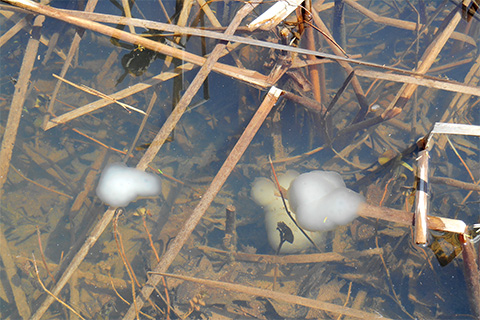
The seeds of sedges, grasses, and rushes will over-winter well in the moist conditions of this wetland, and even need a winter freeze in order to germinate in the spring.
Turtles are a common resident in wetlands like the Algerine Swamp, and that doesn’t change in winter. During this time, turtles go underwater and rely on stored energy and oxygen in the water which travels through certain areas of their skin.
For example, snapping turtles hibernate underwater, usually at the bottom of sediment, mud, and vegetation in a wetland like this one. This provides a stable environment to spend the winter that won’t go below freezing even if the water surface is frozen over.
Protecting and Enhancing Pennsylvania Wetlands
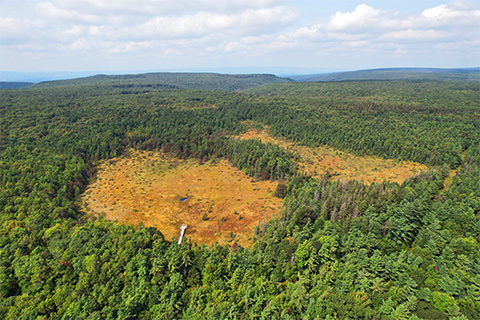
Through
biodiversity conservation, DCNR works to ensure wetlands continue to thrive and support native plants and animals.
Special management requirements have been developed for use around vernal pools to protect
these unique animal and plant communities. For example, buffers are placed around vernal pools during timber sales.
It is also important to maintain dead and down woody material, such as logs, on the edge of pools and wetlands, as they provide cover for a variety of invertebrates, small mammals, and salamanders.
The
Pennsylvania Fish and Boat Commission is charged with protecting the aquatic wildlife -- invertebrates, retiles, and amphibians -- found in our wetlands and works with DCNR to complete habitat projects and other studies such as box turtle surveys.
If you visit or drive by a wetland this winter, think of all the plants and animals that depend on that ecosystem and how they benefit from the snow, ice, and cold.